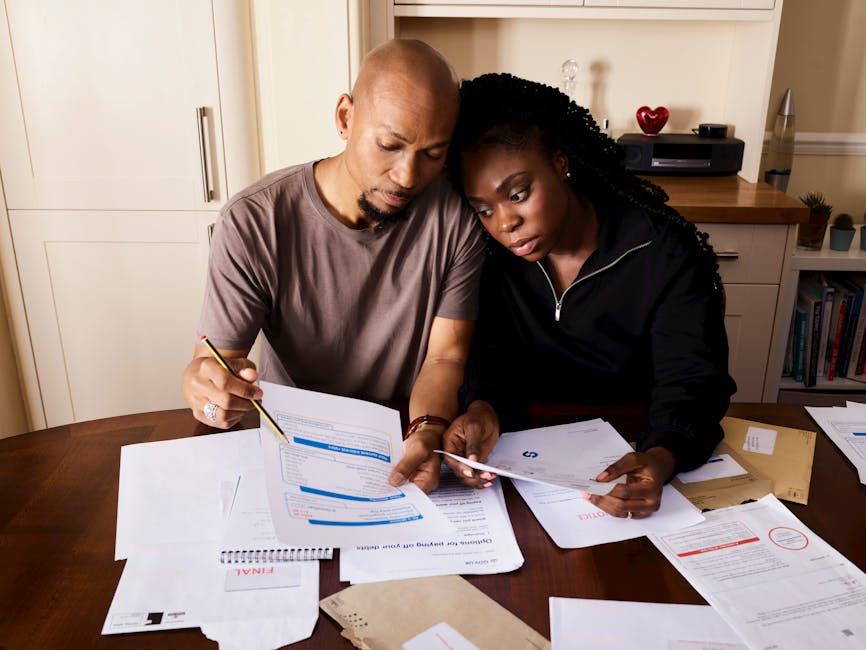Here's why it's important to reconcile your bank statements
Find out what bank reconciliation is and why you should reconcile your statements at least once per month

According to data from the Federal Trade Commission, fraud is on the rise. As banking tools increasingly rely on AI-driven or automated systems, keeping an eye on your bank and savings accounts is important. If $100 or $1,000 goes missing due to a typo, theft, or faulty tech, without regular reconciliation, you may not know until you're bouncing checks.
Bank reconciliation compares your personal records with your bank statements. Without this process, you're at risk of overdrafts, unnoticed fraud, or negative outcomes due to decisions based on bad financial data.
Keep reading to learn more about bank reconciliation and why you should do it.
2 / 6
What is bank reconciliation?

Vodafone x Rankin everyone.connected via Pexels
Bank reconciliation is the process of matching your own accounting records with statements the bank sends you. Businesses reconcile their accounts, and so should individuals and households.
The process involves checking your checkbook or savings account register — or the spreadsheet or app where you record your deposits, withdrawals, and spending — against statements from the bank.
During statement reconciliation, you want to ensure you recognize everything on the statement. You also want to know whether the amount you think you have in your account is correct. Timing differences, such as deposits in transit and outstanding checks, are also accounted for.
3 / 6
Key benefits of reconciling bank statements
Some main reasons to reconcile your accounts with bank statements every month include:
- Accuracy in financial records: Reconciling helps you identify and correct mistakes in bookkeeping — yours or the bank's. You might find errors such as duplicated entries, data-entry or recording errors, or missing line items.
- Fraud detection and risk mitigation: When you keep up with account reconciliation, you can more quickly spot fraudulent charges. You usually have to report fraudulent charges within 60 days of receiving a statement, or you're responsible for the amount.
- Cash flow management: Reconciliation helps you understand exactly what's available in your account. It's not always the amount showing on your bank app, as you might have outstanding deposits or checks. A better understanding of your cash flow helps prevent overdrafts.
- Accurate financial reporting and tax compliance: Regular reconciliation supports better financial reporting overall, which can help streamline personal or business finance work. That's especially true during tax time.
- Internal control and operational oversight: For businesses and other organizations, regular bank reconciliation is a critical internal control that helps support accountability.
4 / 6
Risks of not reconciling
You might think you can keep up with your bank accounts in your head, especially with help from an easy-to-access banking app. However, if you don't track credits and debits on paper or via electronic means and compare them regularly with bank statements, you're at risk for:
- Undetected errors. Something as simple as a typo could turn into expensive fees or complicated accounting challenges later.
- Fraud exposure. Unchecked accounts may allow unauthorized transactions to go unnoticed. If fraudsters exploit a vulnerability, they may continue targeting your account using payment methods such as Zelle.
- Cash shortages. You may have less money than you think, but continue spending based on the higher amount.
- Overdraft or NSF fees. These fees can add up to hundreds of dollars if you bounce numerous checks.
- Poor decision‑making. Without a good account of your cash, you may make financial decisions that are bad for your budget.
- Tax misreporting. Businesses need a detailed account of their funds for accurate tax returns.
- Potential audits. Tax errors can lead to audits, and those are more difficult when you don't know what's going on with your bank accounts.
- Compliance failure. Businesses in heavily regulated industries may need to track every dollar received, saved, or spent, and you can't do that without reconciliation.
5 / 6
How often should you reconcile bank statements?
Individuals, households, and small businesses should reconcile monthly when they receive bank statements. You may receive statements in the mail or electronically, depending on your account settings.
Larger businesses or entities with high transaction volumes may want to reconcile weekly or even daily. The more transactions you have to reconcile at a time, the harder it is to manage the process.
Timely reconciliation makes it easier to find and fix issues. If the problem is on your end, you can easily correct the math error and move on. If the issue is with the bank, it's easier to report the error and have someone fix it when it occurred more recently.
6 / 6
Best practices and tips for bank statement reconciliation
As you move forward with regular bank reconciliation, consider these tips:
- Update all your records before you reconcile them with bank statements.
- Cross-check all transaction types during reconciliation, including deposits, withdrawals, fees, checks, debit card payments, and interest earned.
- Use reconciliation tools and software, such as QuickBooks, to help you manage the process.
- Keep supporting documentation, such as statements and canceled checks, for three to seven years in case of a tax audit.
- In a business setting, separate duties when possible — the person who oversees spending should not be the person who reconciles accounts, for example.
